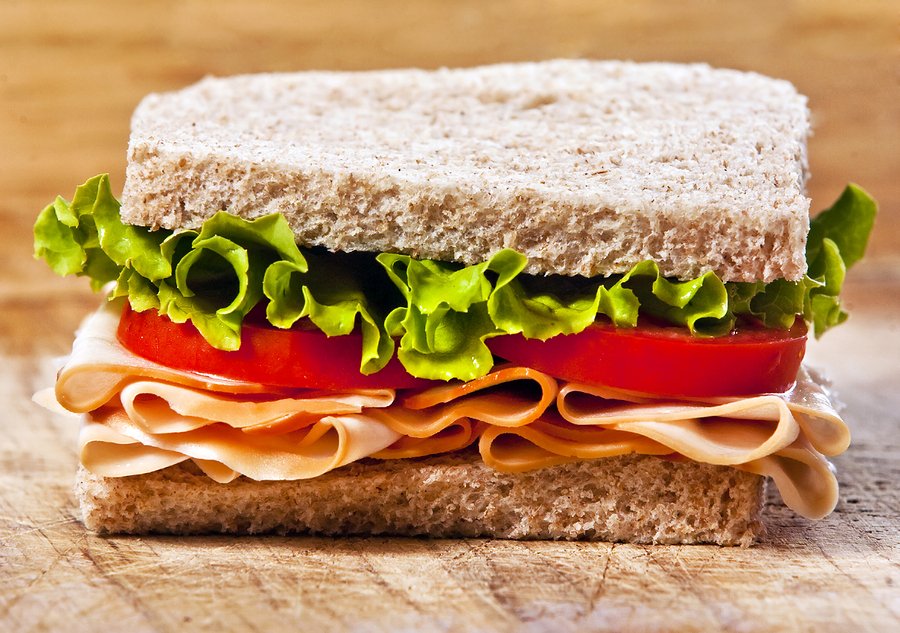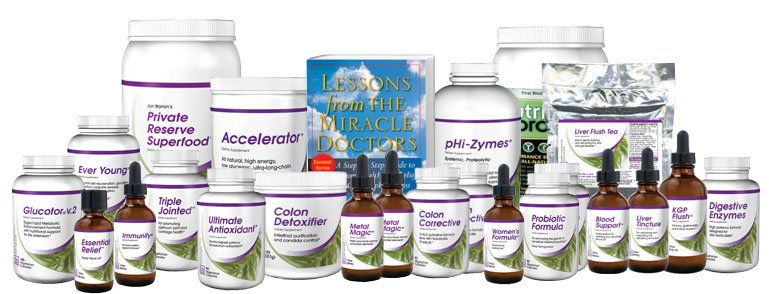Whether you are grabbing a bite to eat at work or something on the run as you accomplish a few chores during the day, many of the available options are unhealthy and high in calories. But you already know that a fast food burger and fries, a couple of slices of pizza, a fried chicken and biscuits meal (most of the items we call lunch) are not going to cut it nutritionally, nor are they going to help our waistlines. So instead, you “wisely” pick up a simple deli sandwich or brown bag one from home. While on the surface this may seem like a much better choice, sadly, new research is proving that it may not be so after all.
The study, which was conducted by the United States Department of Agriculture (USDA) in Beltsville, Maryland, found that the sandwiches many of us eat for lunch are responsible for a good portion of the excessively high sodium levels in our diets, not to mention, a major source of calories.1 Melnick, Meredith. “Sorry, Your Sandwich Might Be Bad For Your Health.” Huffington Post. 10 October 2014. Accessed 12 October 2014. http://www.huffingtonpost.com/2014/10/10/sandwiches-sodium-health-salt_n_5948480.html The subjects were 10,000 adult participants in the 2009 and 2010 What We Eat in America food surveys, which are part of the broader National Health and Nutrition Examination Survey (NHANES). The scientists assessed the information collected for both the types of foods the volunteers had reported eating as well as for calorie counts, sodium content, and more.
Sandwiches were consumed on a daily basis–and sometimes more than once a day–by 49 percent of the subjects. It is because they are such a common choice that their contents have such an important dietary impact on us. The data showed that each sandwich we eat provide us with 20 percent of a day’s recommended sodium intake, on average. Since the typical American adult has a daily sodium intake of 3,436 milligrams according to the Centers for Disease Control and Prevention,2 “Americans Consume Too Much Sodium (Salt).” Centers for Disease Control and Prevention. 23 February 2011. Accessed 13 October 2014. http://www.cdc.gov/features/dssodium well above the recommended intake level of 1,500 mg, these midday meals may be a lot more detrimental than we ever thought.
It does make sense, however, when you think about the foods making up the majority of sandwiches we eat. An obscene 80 percent of the sodium we consume comes from processed food items such as prepackaged luncheon meats. Perdue turkey cold cuts, for example, pack a whopping 215 mg of sodium per super thin slice, so if you like a thicker sandwich you may end up in the vicinity of 1,000 mg of sodium in one meal–just from the meat. In addition to the amount of processed foods in our sandwiches, the other issue is the average portion size. The typical sandwich consumed by subjects offered more than 1,000 calories and approximately 1,700 to 1,800 mg of sodium. In other words, a part of the reason sandwiches have so much sodium is that they are just too darn big.
Beyond the sodium woes of our sandwiches, deli meats have been found numerous times to be bad for your health in general. A 2010 study at the Harvard School of Public Health in Boston determined that people who eat processed meats, including deli meats, have a 42 percent higher risk of developing heart disease and a 19 percent higher risk of being diagnosed with type 2 diabetes for each daily serving of just 1.8 ounces of meat.3 Micha, Renata; et al. “Red and Processed Meat Consumption and Risk of Incident Coronary Heart Disease, Stroke, and Diabetes Mellitus.” Circulation. 17 May 2010. Accessed 13 October 2014. http://circ.ahajournals.org/content/121/21/2271.abstract
The bottom line is that those sandwiches you’ve been eating every day at lunch have likely not been as good for you as you thought. If you really don’t want to give your sandwiches up, try to modify them to make healthier versions. Roast a chicken, ham, or turkey at home and set aside a bunch of slices to save for sandwich meat rather than buying a plastic package of processed meat. Don’t forget to cut back on portions too, paring them down to a more appropriate amount of food. Choose heartier types of bread such as a whole wheat or multigrain for fiber. And add vegetables to the sandwich such as spinach, tomatoes, bell pepper strips, or onion for flavor and extra nutrition. Just don’t start adding pickles to your sandwich, because just one medium dill pickle clocks in at over 800 mg of sodium.
Oh, and lest we forget, having your sandwich with a bag of chips or a side of potato salad, or even a green salad swimming in dressing is a non-starter.
References
| ↑1 | Melnick, Meredith. “Sorry, Your Sandwich Might Be Bad For Your Health.” Huffington Post. 10 October 2014. Accessed 12 October 2014. http://www.huffingtonpost.com/2014/10/10/sandwiches-sodium-health-salt_n_5948480.html |
|---|---|
| ↑2 | “Americans Consume Too Much Sodium (Salt).” Centers for Disease Control and Prevention. 23 February 2011. Accessed 13 October 2014. http://www.cdc.gov/features/dssodium |
| ↑3 | Micha, Renata; et al. “Red and Processed Meat Consumption and Risk of Incident Coronary Heart Disease, Stroke, and Diabetes Mellitus.” Circulation. 17 May 2010. Accessed 13 October 2014. http://circ.ahajournals.org/content/121/21/2271.abstract |












I have type 2 diabetes, and
I have type 2 diabetes, and one of the reasons is sandwiches.
No, it’s probably *not* the fault of processed meat. The reason deli meats increase the chances of diabetes, IMAO, is simply that they’re used in sandwiches.
For a very long time we’ve been told that grains are an important part of a healthy diet. Actually, a diet high in grains predisposes us to diabetes.
I can’t eat *any* commercially sold bread without spiking my blood sugar, even whole grain breads. There isn’t enough fiber in most whole grain bread to make a significant difference.
You might find the following
You might find the following article informative. http://www.jonbarron.org/heart-health/how-to-prevent-heart-disease
Hey Beth Levine and Baseline
Hey Beth Levine and Baseline of Health Foundation,
Thank you for this useful reminder about sodium levels of deli meats etc.
I was puzzled at the end by the high sodium level in pickles. I thought naturally fermented foods like sauerkraut, kim chi, were very useful because of their high probiotics contents.
Do you mean they all have a negative side, too – sodium?
Thanks
Georgi
Fermenting is one thing, but
Fermenting is one thing, but pickle brine also contains seasonings—and salt is a major seasoning used in pickle brine. In fact, salt and vinegar are often used in equal amounts. http://www.cooks.com/recipe/pw4wa96a/salt-brine-pickles.html
what types of vitamins does
what types of vitamins does the sandwich have?